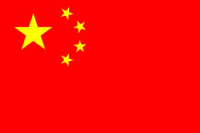The government’s target of seven percent is the lowest in two decades.
Times of India reported on the “reality check” of China’s lowest annual growth target in two decades, with the seven percent target said to show “lowered ambition” thanks to “declining exports and foreign investments”, alongside the government’s “fear of slipping into a ‘middle income trap’ along with problems like industrial pollution”.
The country is set to end the year with the “highest ever budget deficit” of 2.3 percent of GDP (Gross Domestic Product) compared to last year’s 2.1 percent, and Chinese Premier Li Keqiang addressed the National People’s Congress in order to explain “why he chose a gross domestic product target that was even lower than the achievement of 7.4 percent in 2014”.
Li noted that “downward pressure on China’s economy has continued to mount, and we have faced an array of interwoven difficulties and challenges”, with an “era of low growth rates” now the “new normal”, and Times of India speculated that the low target for the “world’s second biggest economy” is “bound to cause apprehension in several national capitals”, as the economy in China “has been driving economic growth in several countries”.
Growth in the 35 years between 1978 and 2013 had remained at an average of around 10 percent, but in 2012 and 2013 it fell to 7.7 percent, and 7.4 percent last year compared to a target of 7.5 percent. Li commented that “in order to defuse problems and risks, avoid falling into the ‘middle income trap’, and achieve modernisation, China must rely on development, and development requires an appropriate growth rate”, in an attempt to justify his decision.
In turn, he said the new target “takes into consideration what is needed and what is possible”, and that it would still be possible to meet the country’s goal of building a “moderately prosperous society” with 10 million new jobs: “If China’s economy can grow at this rate for a relatively long time, we will secure a more solid material foundation for modernisation.”
An interesting addition to the country’s economic plans was the ‘Made in China 2025’ strategy, which sounds very much like the ‘Make in India’ plan introduced in India last year, and Li stated that this would allow the country to “seek innovation-drive development, apply smart technology, strengthen foundations, pursue green development and redouble our efforts to upgrade China from a manufacturer of quantity to one of quality”.
The Recycler reported in February this year that the Indian economy had seen better growth than the Chinese economy.
